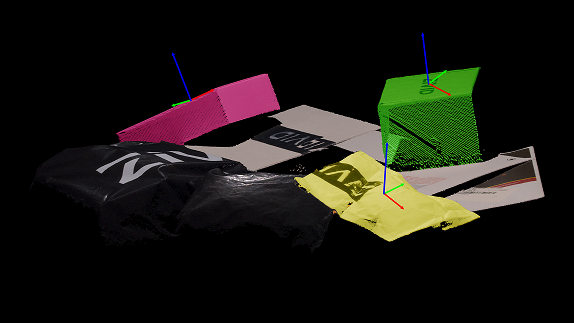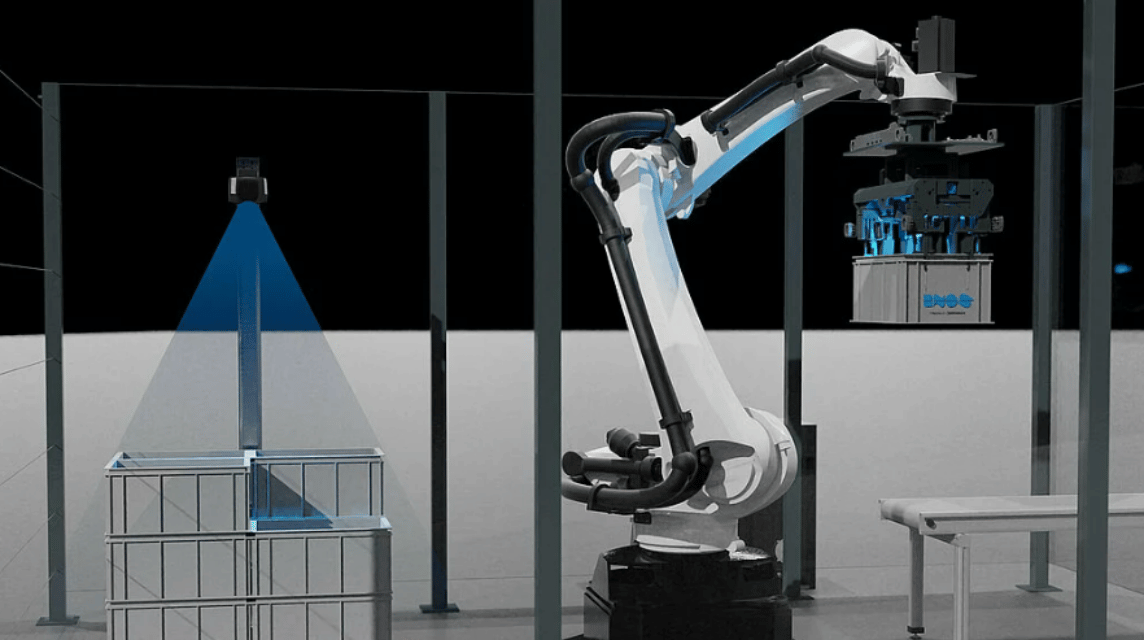3D vision for the logistics industry
Reliable Picking Accuracy
High-resolution, ultra-precise native 3D point clouds allow robots to accurately recognize and segment individual parcels, even in cluttered or overlapping scenes.
Flexible Field-of-View
Engineered to capture large working volumes with a wide field of view (FOV) and long working distance, acquiring a full 2D + 3D snapshot in under 0.5 seconds.
Fast, Repeatable Performance
While the robot places a parcel and returns to the pile, the vision system identifies the next item, enabling seamless, uninterrupted picking with no idle time.
Point cloud examples of logistics objects captured with a Zivid 3D camera
What's possible with Zivid 3D cameras
Rapid Parcel Induction
Parcel induction robots must operate without delays to maintain thousands of picks per hour. The next pick needs to be ready before the last one is done, making fast vision essential.
Zivid 3D cameras capture 2D images and 3D point clouds in under 50 ms, allowing your robot to work at full speed without waiting.

Accurate 3D Imaging for Sorting and Packing Operations
Sharp and consistent color and depth data are crucial for reliable logistics automation. Zivid 3D cameras handle all parcel types, black, white, glossy, or textured, even under challenging light. With factory calibration and light suppression, both 2D and 3D data stay accurate, ensuring dependable robotic picking, sorting, and packing.
Works with all pallet sizes and shapes
Irregularly stacked or mixed SKUs often cause double picks, mispicks, and downtime - especially when wrapped in plastic or made of transparent, dark, or glossy materials.
The Zivid 3D camera handles even the most challenging items, ensuring precise detection and reliable picking performance.

Customer Stories
.png?width=1920&height=1080&name=item%20picking%20by%20Fizyr%20(1).png)
Fizyr | Handling unknown objects in logistics
Fizyr detection and picking software, together with Zivid 3D cameras are solving biggest logistics challenges.
.png?width=1144&height=640&name=solwr%20(1).png)
Solwr | Mobile Picking Robots for Warehouse Automation
Grab™ robot, powered by Zivid's 3D vision, revolutionizes warehouse automation with high-speed, accurate item picking, and flexibility.





